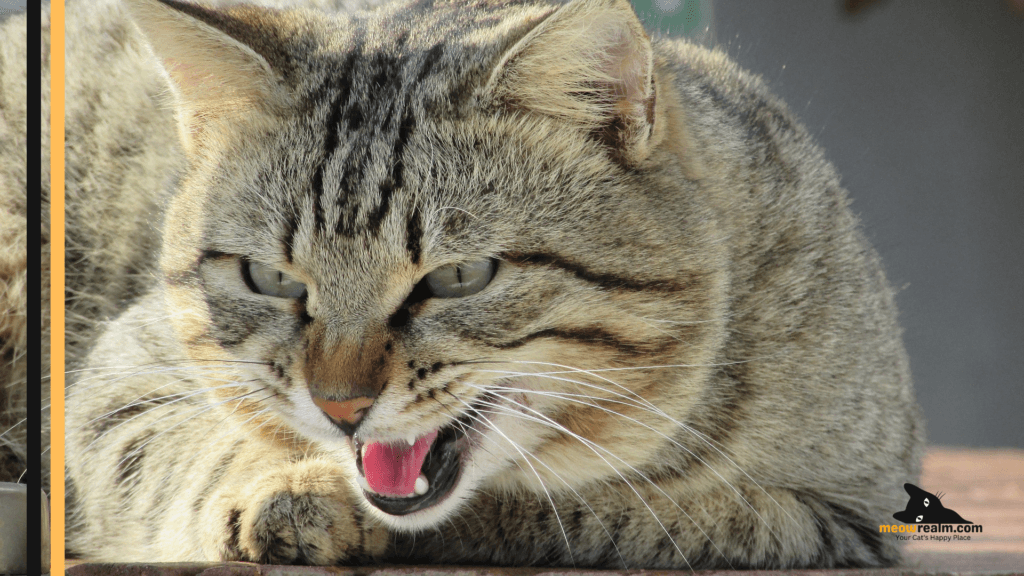Cats communicate in many ways, and cat growling is one of the most distinctive sounds they make. For cat owners, hearing a growl can be concerning and often leaves us wondering what caused this behavior. Understanding cat growling is key to better communicating with your pet and maintaining a peaceful home environment.
In this article, we’ll explore why cats growl, what it means, and how to properly respond when your cat growls. By understanding the reasons behind cat growling, you can provide a better environment for your cat and ensure they feel safe and comfortable.
What Is Cat Growling?
Cat growling is a low, guttural sound that cats make to express discomfort, fear, or aggression. It’s often a warning signal that something is bothering them. Unlike purring, which is usually a sign of contentment, growling is a clear indication that your cat feels threatened or unhappy.
- Warning Signal: When a cat growls, they are warning you or another animal to stay away. It’s their way of saying they need space.
- Emotional Expression: Cats growl to express fear, pain, or frustration. It’s important to understand the context of the growling to determine the cause.
Common Causes of Cat Growling

Understanding why cat growling occurs is the first step in addressing it. Here are some of the most common reasons why your cat might be growling:
1. Fear or Anxiety
Fear is one of the primary reasons for cat growling. If your cat feels threatened by a new person, animal, or situation, they may growl as a defensive response. For example, a cat may growl when they encounter a stranger or if they’re in an unfamiliar environment.
2. Pain or Discomfort
Cats may also growl if they are in pain or feeling unwell. If your usually friendly cat suddenly starts growling, it could indicate an underlying health issue that needs to be addressed. Growling in response to touch, particularly in a specific area, might be a sign of physical discomfort.
3. Territorial Behavior
Cat growling can also be a result of territorial instincts. Cats are known to be territorial animals, and growling is their way of warning others to stay away from their space or belongings. This is especially common in multi-cat households or when a new pet is introduced.
4. Frustration
Sometimes, cats growl out of frustration. If they are unable to get what they want, such as food or attention, they might express their dissatisfaction through growling. This type of growling can usually be resolved by addressing the source of the frustration.
How to Respond to Cat Growling
If your cat is growling, it’s crucial to handle the situation calmly and effectively. Here are some steps you can take:
1. Give Your Cat Space
The most important thing to do when you hear cat growling is to give your cat space. Growling is a warning, and ignoring that warning can lead to aggression, such as biting or scratching. Step back and let your cat calm down on their own.
2. Identify the Trigger
Try to determine what is causing the cat growling. Is there another animal nearby? Did something change in their environment? Identifying the trigger can help you prevent future occurrences.
3. Avoid Punishment
Never punish your cat for growling. Growling is a natural behavior that indicates your cat is uncomfortable or scared. Punishing them can increase their anxiety and lead to more aggressive behaviors. Instead, focus on understanding the reason behind the growling.
4. Use Positive Reinforcement
Once the growling has stopped and your cat is calm, use positive reinforcement to reward their calm behavior. This helps your cat associate calmness with positive outcomes, reducing the likelihood of future growling.
Preventing Cat Growling
While cat growling is a natural behavior, there are ways to reduce its occurrence and make your cat feel more comfortable:
1. Create a Safe Environment
Cats need to feel safe in their environment. Make sure your cat has a quiet place to retreat to if they feel scared or anxious. This could be a separate room or a high perch where they can observe without being disturbed.
2. Gradual Introductions
If you’re introducing a new pet or person into your home, do so gradually. Sudden changes can lead to fear-based cat growling. Allow your cat to get used to new situations at their own pace.
3. Regular Health Checkups
Since pain or discomfort can lead to growling, it’s important to have your cat checked regularly by a veterinarian. This ensures that any health issues are identified and treated early, preventing growling related to pain.
When to Seek Professional Help
While occasional cat growling is normal, frequent or intense growling may require professional intervention. If your cat growls often and you’re unable to determine the cause, consulting a veterinarian or a cat behaviorist can help. They can rule out medical issues and provide guidance on managing your cat’s behavior.
Understanding Cat Body Language
In addition to cat growling, cats use other forms of body language to communicate. Understanding these signals can help you respond appropriately and avoid triggering growling:
- Flattened Ears: If your cat’s ears are flattened against their head while they are growling, it indicates fear or aggression.
- Puffed Tail: A puffed-up tail accompanied by growling suggests that your cat feels threatened.
- Dilated Pupils: Dilated pupils can indicate fear, especially when combined with growling. It’s a sign that your cat is in a heightened state of alert.
By understanding these additional cues, you can better understand your cat’s emotional state and respond accordingly.
Respect the Warning
Cat growling is an important form of communication that should never be ignored or punished. It’s your cat’s way of telling you they’re uncomfortable, scared, or in pain. By understanding the reasons behind cat growling and responding appropriately, you can help your cat feel more secure and reduce the frequency of this behavior.

